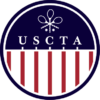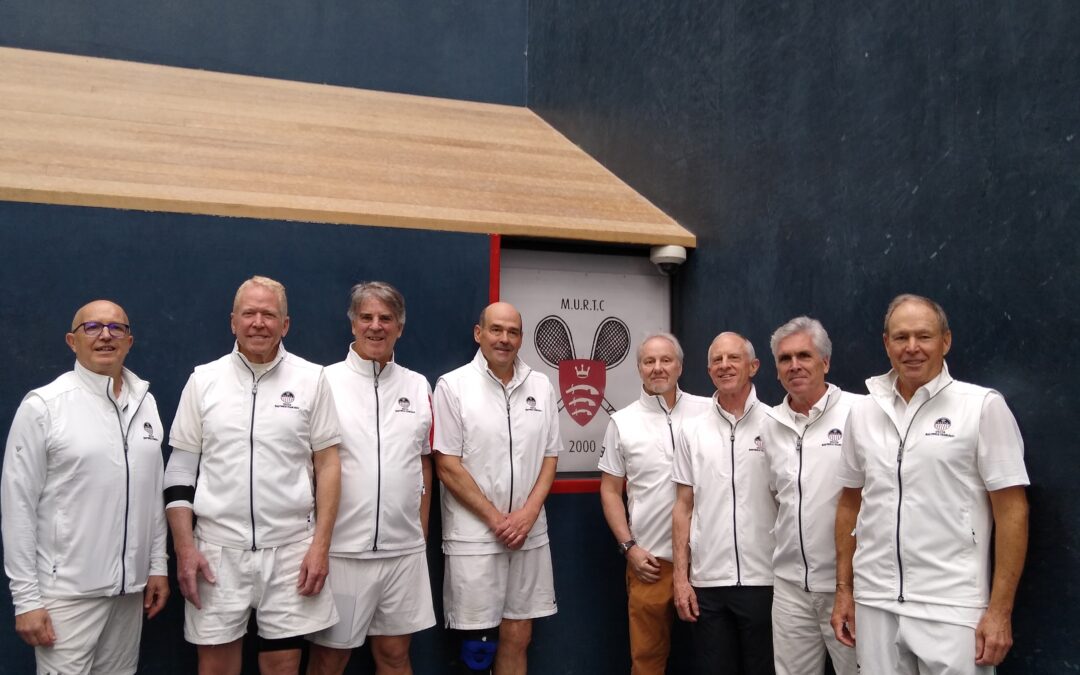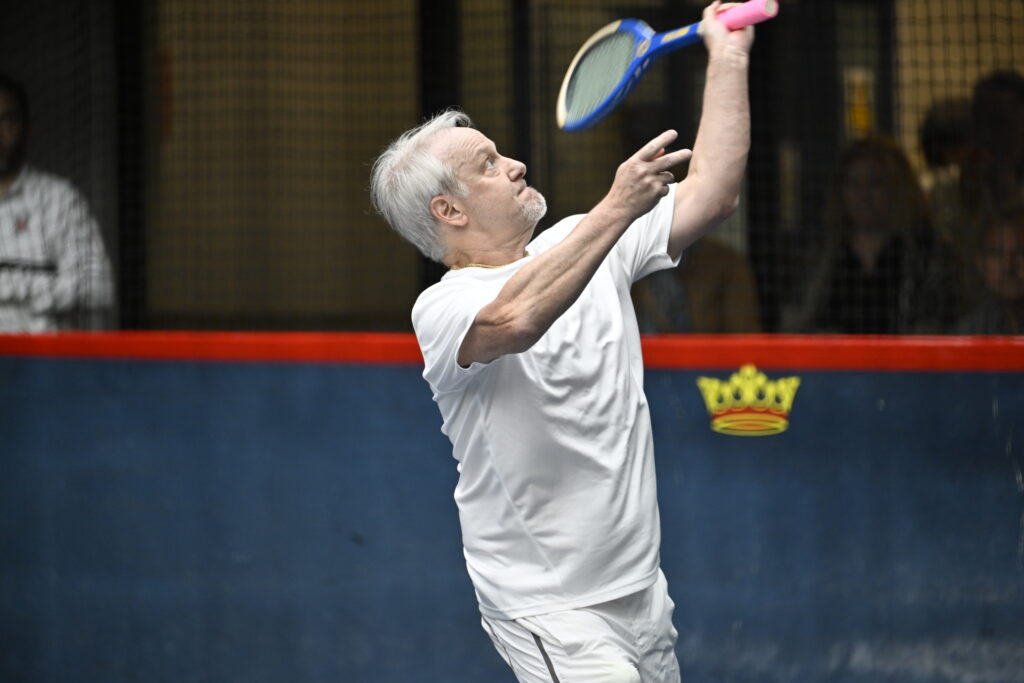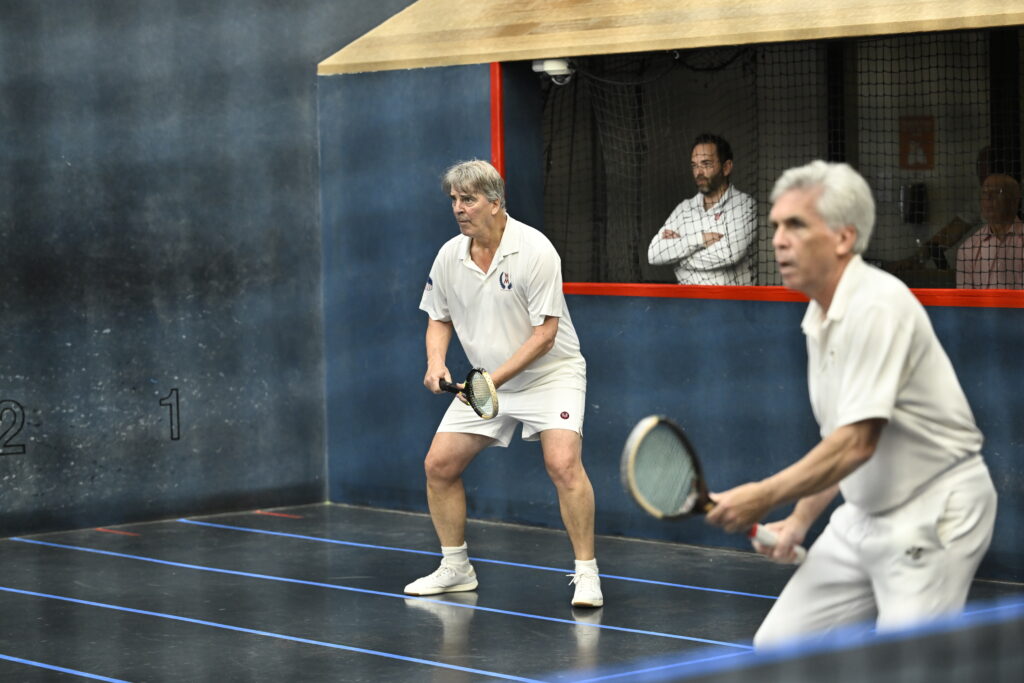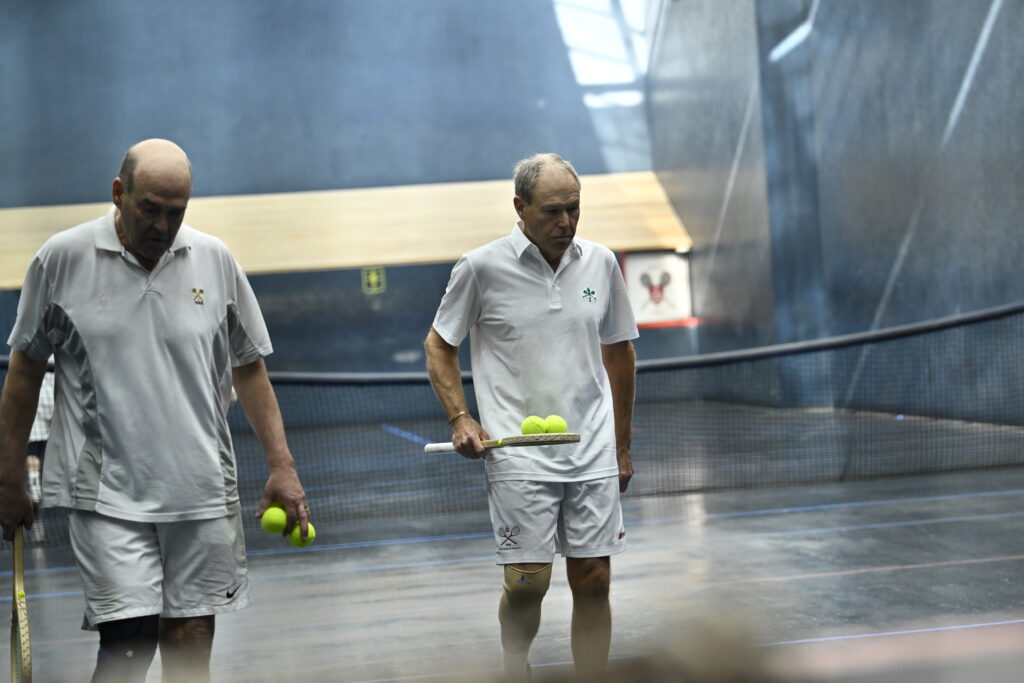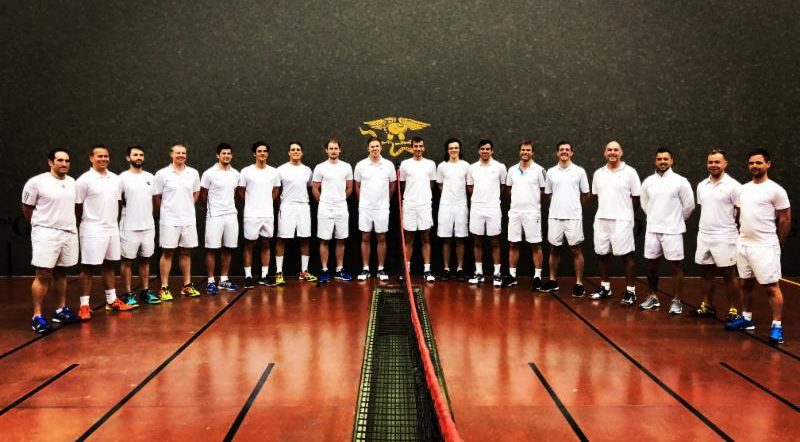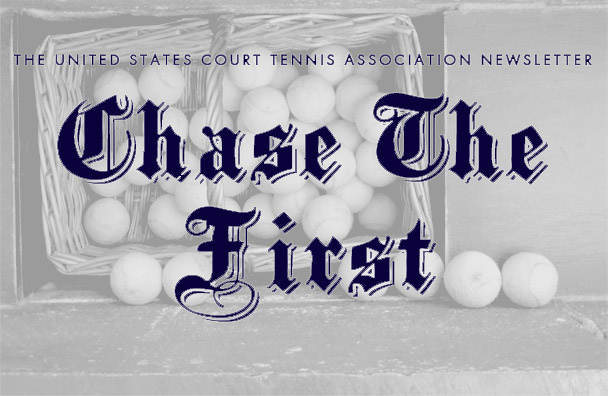Team USA at the Bostwick Cup:
How to Look Good Losing
by George Bell
For those of you who live on a diet of headlines here’s a snack: The 60+ US Bostwick team finished third of four teams in the World Masters, and, truth be told, narrowly avoided finishing fourth.
All matches were played at the Middlesex University Real Tennis Club, a gloriously lit court with walls of navy blue, trimmed with a penthouse of blonde oak. Painted lines are sky blue and red. The arched ceiling, one of the highest among all courts, permits diffuse sunlight throughout the day via massive horizontal, translucent blinds supported on the ceiling trusses. The blinds were useful as match play often ran for 12 or more hours. The court encourages high serves of all sorts, which, when hit correctly, cause the ball to shoot off the penthouse as if launched from a slingshot. The court is due to be flattened in about two years, coincident with its 26th birthday. The university has decided the land can be put to better use; their intent to destroy the building was announced in 2022, and appears not to be a matter of money.
The Bostwick format calls for two singles and three doubles, a small threshold change that bespeaks advancing age – the Cockram 50+ matches are three singles and two doubles. Co-captain Steve Hufford, adept with Excel, had circulated to me, his far less mathematical co-captain, something like 30 permutations for our line-ups. It turns out spreadsheets can only take you so far.
One of the humorous rituals of these biennial events is the injury report, whereby players from all countries regale one another in the dedans with stories of new hips, partial knee replacements, frozen shoulders and creeping arthritis. There was a gym near the court, players were welcome to warm up there, stretching their aging legs and quietly groaning in pain. The Middlesex students stared as if witnessing the rites of an all-but-forgotten tribe. Other signs of age produced a good laugh too. The Australians delegated their team gear decision to a player who will remain anonymous. The designs for shirts and shorts were judged first-rate by all team members—the rest was left to logistics. When the gear arrived in Middlesex, it was exactly as they had hoped, except their man had ordered everything in ladies’ sizes.
Order of play was uniform: first doubles, third doubles, first singles, second singles, and second doubles. At our age, injuries spring from benign activities, even sleeping in a strange bed can be hazardous. Our eight-man squad was blessed to have a player-in-waiting, Doug Sheperdigian, a US citizen who lives in the UK. While not called upon for duty, Doug fulfilled the prophecy of age by becoming injured himself before the competition.
First up: Australia. George Bell and John Damon lost a squeaker in three sets at first doubles. Alas Peter Vogt and Alec Monaghan, at third doubles, and Steve Hufford at first singles, lost handily. Anders Cohen, at second singles, notched our sole victory, taking his third set 6-1. The rubber match, second doubles, produced a three-set loss for Michael Sullivan and Mark Philpott, who stayed valiantly close to their opponents all the way.
Next, Great Britain trounced us 5-0 and seemed the strongest team. Bell and Damon notched the greatest number of games won – six – which evidenced the Brits’ strength.
Hall-of-Fame legend Lesley Ronaldson, worked from a galley kitchen the size of a broom closet to produce hot lunches of lasagna, stew, and fish pies, served with salads, white wines and baked desserts. She fed up to forty players and friends daily. Her touches helped to salve our wounds as we headed into our final match.
Against France, Bell and Damon saved two match points in the second set to emerge with a 6-2 third-set victory. It was a two-hour match that looked to be lost and it gave us some hope. With a crafty line-up change, Philpott and Monaghan clinched a two-set win at third doubles, and Anders Cohen, our winningest player, won his match 6-4, 6-4 to seal a US victory and a third-place finish in the competition.
The silver lining? We were missing Clothier, Aldrich, Horine, Sofer and other very competent players. Also, our B Draddy USCTA vests were the envy of the Bostwick Cup, to say nothing of Michael Sullivan’s long white pants, reminiscent of Pierre Echebaster. We had a team dinner at the Claddagh Ring, a local Irish pub, where 10 out of 12 people ordered the lamb stew – a kind of culinary camaraderie, I suppose. Though all of us, secretly, would have done what co-captain Hufford did – order a salad – if it meant we could have won the Bostwick Cup.
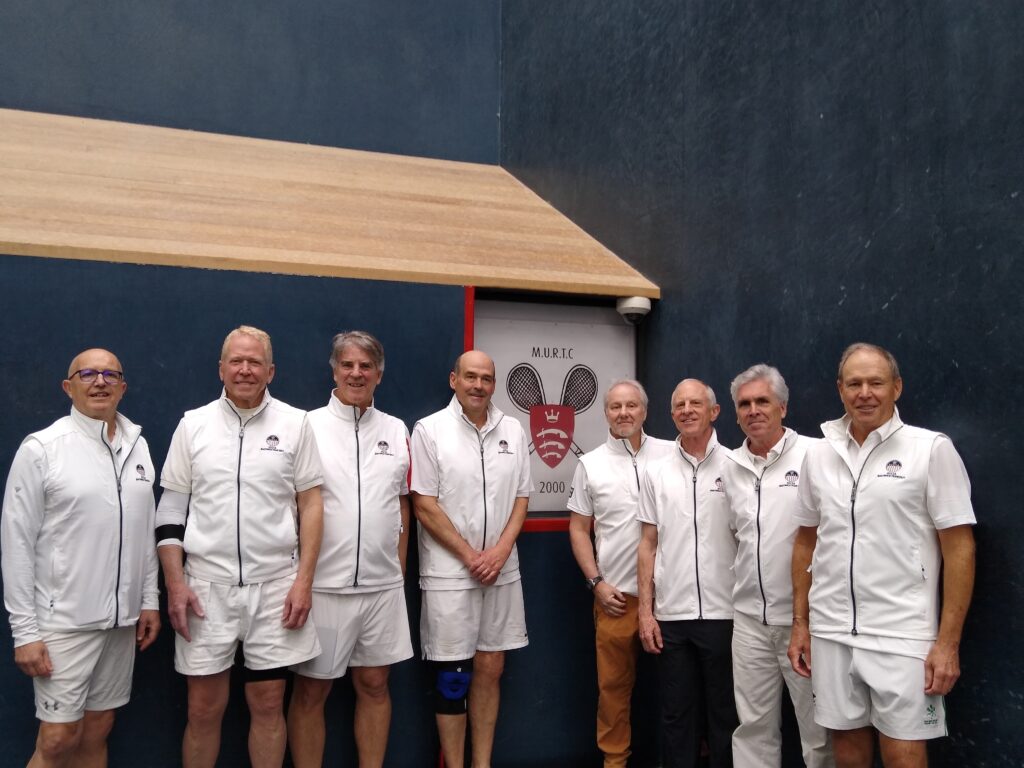
Mark Philpott, Alec Monaghan, Peter Vogt, John Damon, Anders Cohen, Steve Hufford, Micheal Sullivan & George Bell
